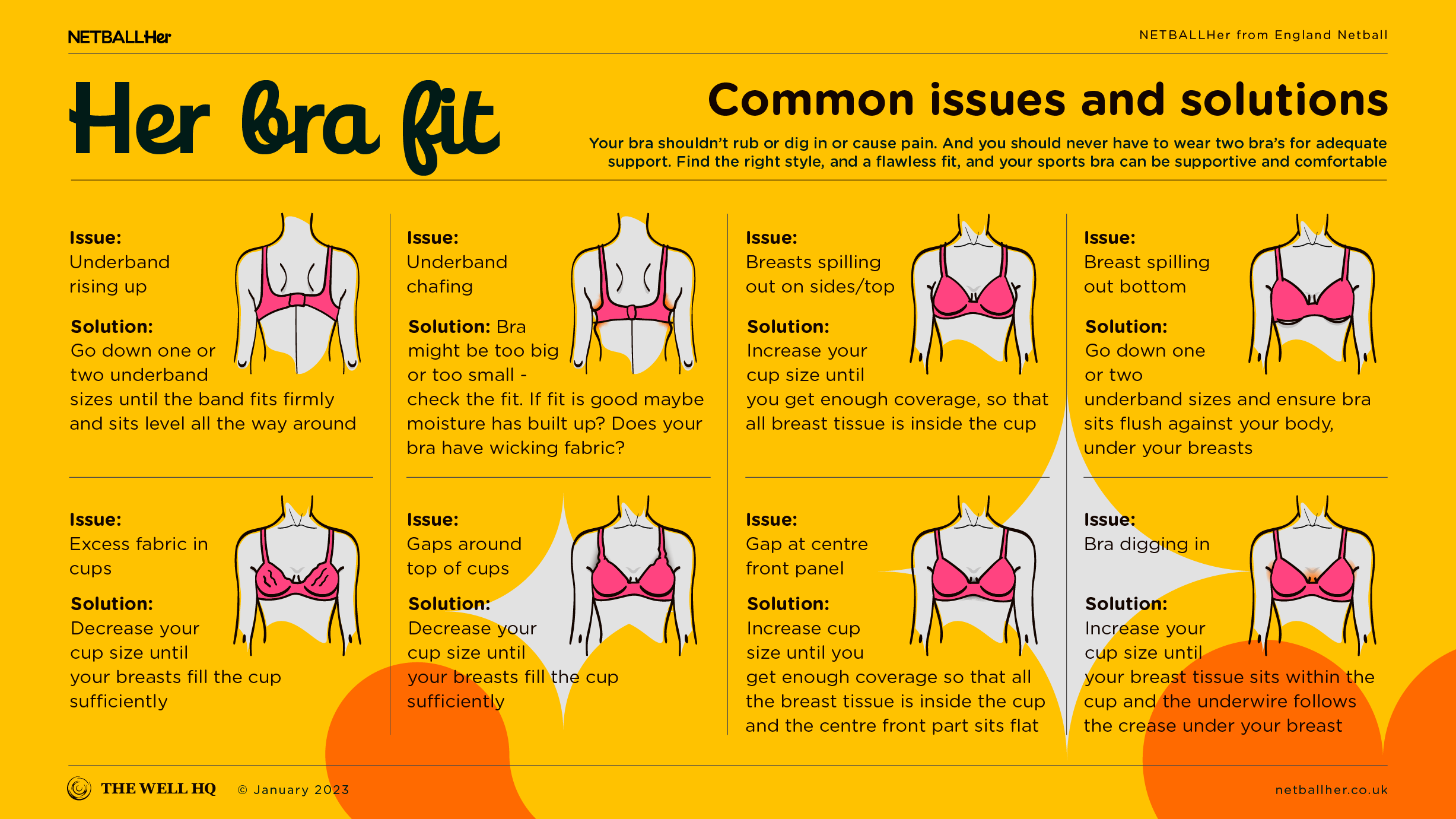Click play for an audio readthrough of this article
Smaller breasts move too – here’s how to support them
Whatever your bra size, it’s really important to wear a sports bra with a good level of support for activity. The challenge with breasts is more obvious the larger they are. Bigger-breasted women are much more likely to report pain and discomfort and stop exercise altogether as a result of not enough support.
But whether you’re an E or an A cup, breasts move during exercise and they do a terrible job of supporting themselves. Research shows that even an A cup can bounce up to 4cms and we know that inadequate breast support during exercise can leave you feeling uncomfortable, impact your confidence and hurt performance.
For smaller-breasted women, a compression (“squash ‘em down”) sports bra can work really well. Often crop-top style bras (marketed as compression) are practical and comfortable for a smaller bust, Sometimes women with a smaller bust make the mistake of opting for too little support. For netball, you should still look for bras designed with high-impact movement in mind, and avoid bras with minimal coverage or spaghetti-thin straps.
With that in mind, here are a few key features to keep in mind as you shop for your next sports bra (or cross examine your current bra);
1. The underband
Is it adjustable? Does it have an opening?
You often have to stretch crop top-style bras over the head and shoulders to get them on. The amount of stretch required in the underband to allow this often means that the bra won’t offer the right level of support for high impact activity, since a very stretchy underband isn’t as supportive.
Is it strong?
Even A cup breasts can weigh half a kilo – they need support too. And since the underband is responsible for most of a bra’s support, it needs to fit well and be strong. But note: strong elastic doesn’t mean tight. If you stretch the underband when you’re not wearing the bra, you’ll get an idea of the strength of the elastic used … it should be firm and not too stretchy.
2. The straps
Having smaller breasts means you don’t need the wider straps that larger busted netballers should opt for. However, thinner straps can leave indents and create painful pressure if they are too tight. Equally, they shouldn’t slip off the shoulder, as that demonstrates they’re too loose.
3. Padding
Padding in sports bras can be a useful design feature as it increases the amount of support a bra can offer. Often, women with smaller breasts like the silhouette that padding creates, however, padding shouldn’t be used in a sports bra to increase bust size or create cleavage. Leave that to the balcony or push up bra, and leave the sports bra for function – not photogenics.
4. The fabric
T-shirt style (cotton rich) fabrics tend to stretch too much, and don’t offer enough support across the breast.
Look for polyamide/nylon (very strong fabrics offering compression; usually with a soft feel that’s lovely against the skin) and try to avoid standard polyester.
Elastane/ lycra is also good as a stretchier fabric that offers compression, strength and the right level of elasticity
The fit
Does it actually fit?
It’s really easy to get the fit of a compression style bra wrong on smaller breasts. Even if the bra is too big, the fabric may still sit neatly on the body. It’s also harder to spot movement of the breasts within the bra.
A test. When you’re wearing the bra, make sure you can take a nice deep breath, and check it isn’t too easy to pull the bra away from your body. Next, jump around in front of a mirror and try to spot any breast movement. The bra might not even feel uncomfortable but the goal is to minimise any and all movement within it. Remember: compression needs to compress.
Lastly, please also remember that compressing your breasts doesn’t mean being unable to breathe, or having to dislocate a shoulder to get your bra on or off.
Some of our favourite sports bras for A to C cups
- Nike (various)
- Anita DynamiX Star Sports Bra
- SportJock Action Sports Bra
- Runderwear Original Runderbra
Please note – no one gets any commission or revenue if you buy through these links. We genuinely think these are the best of what’s out there.
In most cases we link you straight to the manufacturer but please do your own research, particularly when it comes to price!
As a reminder, the content of the course belongs to The Well HQ. You have permission to access and use the content yourself or, if you are an organisation, for the number of users selected, but are not otherwise permitted to share such content with others, all in accordance with our Course Terms and Conditions.

